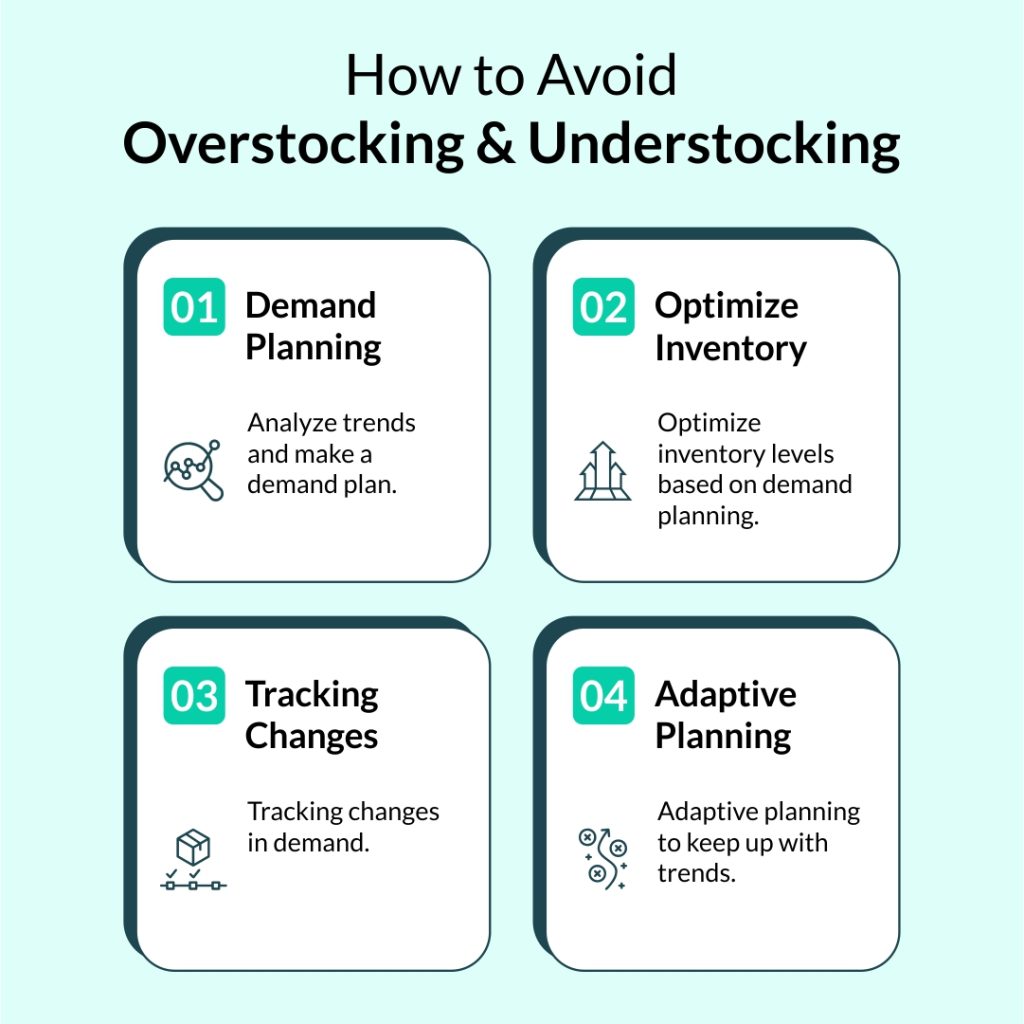Smart FBA Inventory Solutions for Peak Seasons: Avoid Overstocking & Stockouts
The holiday rush, Prime Day frenzy, back-to-school scramble – these peak seasons can either catapult your Amazon FBA business to new heights or leave you drowning in a sea of unsold inventory.
Successfully balancing these high-volume periods requires a strategic approach to inventory management. In this guide, we’ll equip you with the knowledge and tactics needed to not just survive, but thrive during peak seasons, maximizing profits and building a robust brand.
Understanding the Ebb and Flow of Peak Seasons
Every e-commerce business has its own unique rhythm, and recognizing your specific peak seasons is the first step towards effective inventory management. While major shopping events like the holiday season and Prime Day impact nearly every seller, other peaks might be driven by seasonal changes, product-specific trends, or even your own marketing campaigns.
Dig into Your Data
Your past sales data is a treasure trove of insights. Analyze it closely to identify recurring spikes and understand the factors driving them. For example, if you sell swimwear, you’ll likely see a surge in demand during the summer months.
Look Beyond the Obvious
Don’t just focus on the big sales events everyone knows about. There’s more to peak seasons than Black Friday and Prime Day. Keep your eyes open for other factors that can boost your sales.
Watch for changes in the wider market. Are there new trends in your product category? Has a competitor gone out of business? These can all lead to unexpected sales spikes. Pay attention to what’s happening in the world, too. News events, viral social media trends, or even weather patterns can suddenly increase demand for certain products.
Also, don’t forget to consider Amazon’s own actions. Changes to their search algorithm or promotional strategies can have a big impact on your sales. Stay informed about any updates to Amazon’s policies or features that might affect your products.
Pro Tip: Set up Google Alerts for keywords related to your products and industry. This can help you spot emerging trends or news that might affect your sales before they become mainstream.
Forecasting Demand: Data-Driven Sales Predictions
Leverage Amazon’s suite of analytical tools to enhance your sales forecasting accuracy. Utilize Inventory Planning, Restock Inventory, and the Sales Dashboard to gain data-driven insights into future demand patterns.
Combine historical sales data with current market trends and seasonality factors to create more precise forecasts. Consider external variables such as economic indicators, competitor actions, and industry-specific events that may influence demand.
Implement a rolling forecast approach, regularly updating predictions as new data becomes available. This allows for more agile inventory management and reduces the risk of over or understocking.
Pro Tip: Develop multiple forecast scenarios (pessimistic, realistic, optimistic) to prepare for various outcomes. This strategy helps in creating flexible inventory plans that can adapt to changing market conditions.
Monitor key performance indicators (KPIs) such as sell-through rate, inventory turnover, and days of supply to continually refine your forecasting accuracy. Use these metrics to identify areas for improvement in your prediction models.
Remember, forecasting is an ongoing process. Regularly review and adjust your predictions to stay ahead of market fluctuations and maintain optimal inventory levels throughout peak seasons.
Strategic Stocking: Striking the Perfect Balance
With a reliable demand forecast, craft a strategic stocking plan that minimizes risk and maximizes profitability. The goal is to balance meeting customer demand and avoiding excessive storage fees.

Calculating Your Inventory Sweet Spot
Determine optimal inventory levels using this formula as a starting point:
Optimal Inventory = (Forecasted Daily Sales × Lead Time) + Safety Stock
Adapt this formula based on unique product characteristics and risk tolerance. For example, for trendy products with short lifespans, consider lower inventory levels to avoid obsolete stock.
Building a Safety Net with Safety Stock
Safety stock acts as a buffer against unexpected supply chain delays or demand surges. Calculate safety stock by factoring in:
- Demand variability: The degree of fluctuation in customer demand over time. Higher variability requires more safety stock to account for unexpected spikes.
- Lead time uncertainty: The potential for delays or inconsistencies in your supply chain. Longer or less predictable lead times necessitate increased safety stock.
- Desired service level: The percentage of customer orders you aim to fulfill immediately. A higher service level goal requires more safety stock to ensure product availability.
The Overstocking vs. Stockout Dilemma
Overstocking ties up capital and increases storage fees, while stockouts result in lost sales, damaged seller rankings, and customer frustration. To mitigate these risks:
- Prioritize best-selling products
- Maintain leaner inventory for slower-moving items
- Regularly review and adjust inventory levels based on real-time data
Leveraging Amazon’s Inventory Management Tools
Utilize Amazon’s tools to optimize inventory levels:
- Inventory Performance Index (IPI): Monitor overall inventory health
- Restock Inventory Report: Identify products needing replenishment
- Inventory Age Report: Track slow-moving stock
Implementing Just-in-Time (JIT) Inventory Strategies
Just-in-Time (JIT) inventory management is a crucial strategy for Amazon FBA businesses to minimize excess stock while ensuring product availability. This approach reduces carrying costs, increases flexibility, and optimizes cash flow. Effective implementation of JIT for an Amazon FBA business requires several key components.
Cultivating strong supplier relationships is essential, involving open communication channels, shared sales forecasts, and negotiation for priority status. Optimizing order frequency and quantity is another critical aspect, shifting from large, infrequent orders to smaller, more frequent replenishments. Negotiating favorable terms for these smaller orders and utilizing Amazon’s sales velocity data helps fine-tune order timing and quantities.
Streamlining supply chain logistics is crucial, utilizing Amazon’s Partnered Carrier Program and exploring direct factory-to-FBA shipping options. Implementing real-time inventory tracking systems aids in monitoring stock levels across the supply chain. Leveraging technology for inventory management is vital, involving investment in software that integrates with Amazon’s API, setting up automated reorder points, and using predictive analytics to anticipate demand fluctuations.
Developing contingency plans is necessary to mitigate supply chain disruptions. This includes identifying backup suppliers, maintaining a small safety stock of best-selling items, and creating a risk assessment matrix. Continuous improvement and analysis are essential, involving regular review of JIT performance metrics, post-peak season analyses, and staying informed about emerging technologies and best practices.
Balancing JIT with seasonal considerations is crucial, requiring adjustments during peak seasons to account for higher demand and potential shipping delays. This may involve temporary increases in safety stock levels for high-demand products and developing a seasonal JIT calendar aligned with product cycles and Amazon’s key shopping events.
Diversifying Fulfillment Methods
A strategic mix of fulfillment methods balances risk and maximizes efficiency during peak seasons:
- FBA (Fulfillment by Amazon): Ideal for fast-moving products, leveraging Amazon’s vast logistics network for rapid delivery.
- FBM (Fulfillment by Merchant): Suitable for larger or slower-moving items, providing greater control over inventory and reducing FBA storage fees.
- 3PL (Third-Party Logistics) services: Offer additional flexibility and scalability during peak seasons. 3PL providers like Unicargo specialize in:
- Customized warehousing solutions to accommodate seasonal inventory fluctuations
- Advanced inventory management systems integrated with Amazon’s platform
- Efficient order processing and shipping to meet Prime delivery standards
- Value-added services such as kitting, bundling, and custom packaging
- Multi-channel fulfillment capabilities for sellers expanding beyond Amazon
- Scalable workforce to handle sudden spikes in order volume
- Strategic warehouse locations to optimize shipping times and costs
- Expertise in navigating Amazon’s complex fulfillment requirements
Partnering with a 3PL provider allows Amazon sellers to maintain inventory control while benefiting from professional logistics expertise, potentially reducing overall fulfillment costs and improving customer satisfaction during critical peak seasons.

Inbound Shipping: Streamlining Your Amazon Warehouse Arrivals
Efficient inbound shipping processes are crucial for maintaining optimal inventory levels during peak seasons.
Lead Time Management: Accurate forecasting requires consideration of production time, shipping duration, and Amazon’s receiving process. Build in buffer time during peak seasons to account for potential delays. While Amazon’s Restock Inventory tool offers suggested restock dates, partnering with a comprehensive logistics provider can provide more precise predictions.
Strategic Shipping Route Selection: Fast-moving items during peak periods often benefit from expedited shipping options. Air freight is optimal for high-value or urgently needed products. For large-volume sea freight shipments, container optimization is key to cost reduction.
Integrated Preparation and Labeling Services: Amazon offers FBA Prep and Label Services, but these can be costly and may introduce additional complexities. Unicargo provides comprehensive supply chain management, including:
- Amazon-compliant product preparation
- FBA-specific labeling and packaging
- Inventory consolidation and optimization
- Direct integration with Amazon’s systems for seamless inbound shipment creation
Single Point of Management: Centralizing your entire supply chain with a single provider like Unicargo offers numerous advantages:
- Streamlined communication and problem-solving
- Consistent quality control across all processes
- Optimized inventory flow from manufacturer to Amazon fulfillment centers
- Real-time visibility into your entire supply chain
- Reduced costs through economies of scale and process efficiencies
- Expertise in navigating Amazon’s complex inbound shipping requirements
By leveraging a full-service logistics partner, you can focus on core business activities while ensuring the inventory arrives at Amazon’s warehouses efficiently and in compliance with all FBA standards.
Inventory Placement and Distribution: Strategic Deployment for Maximum Impact
Where your inventory is located within Amazon’s fulfillment network can significantly impact your ability to meet demand efficiently and cost-effectively.
Amazon offers two primary options for inventory placement:
- Distributed Inventory Placement (Amazon decides where to store your inventory) and
- Inventory Placement Service (you choose a single fulfillment center).
Pro tip #1: Distributing your inventory across multiple warehouses can help you reduce shipping times and costs, especially if you’re selling to customers across a wide geographic area. You can leverage Amazon’s Multi-Channel Fulfillment or explore using third-party logistics providers for even greater flexibility.
Pro tip #2: Balance Storage Costs and Delivery Speed: Storing inventory closer to your customers can lead to faster delivery times, but it often comes at a higher storage cost. Analyze the trade-off carefully and consider using nearshore warehouses for faster replenishment during peak periods.

Monitoring and Adjusting: Staying Agile in a Dynamic Environment
Effective monitoring is crucial for making informed decisions in Amazon inventory management. Real-time inventory tracking, utilizing Amazon’s API and AI-powered forecasting tools, enables swift responses to stock level changes and demand fluctuations. This proactive approach helps prevent stockouts and overstock situations.
Key Performance Indicators (KPIs) are essential for gauging inventory health:
- Inventory turnover rate
- Sell-through percentage
- Days of supply
- Stock-outs frequency
- Return rate
- Aged inventory percentage
These KPIs provide a comprehensive view of inventory performance, efficiency, and potential issues. Inventory turnover and sell-through percentage indicate how quickly products are selling, while days of supply helps in planning reorder timing. Stock-outs frequency highlights potential lost sales opportunities, and return rate can signal product quality or listing accuracy problems. Aged inventory percentage helps identify slow-moving stock that may require attention.
Regular performance reviews, including weekly inventory audits during peak seasons, allow for timely adjustments to reorder points and safety stock levels. This ongoing analysis helps maintain optimal inventory levels and reduces carrying costs.
Proactive problem-solving strategies, such as developing rapid response plans for stockouts and establishing relationships with backup suppliers, ensure business continuity in the face of unexpected challenges.
Leveraging machine learning and predictive analytics can further enhance inventory management by anticipating demand shifts and identifying emerging trends. This data-driven approach enables more accurate forecasting and helps maintain a competitive edge in the dynamic Amazon marketplace.
Managing Slow-Moving and Excess Inventory: Turning Deadstock into Opportunity
Inevitably, some products will perform below expectations. Effectively managing slow-moving and excess inventory is crucial for minimizing losses and freeing up valuable warehouse space.
1. Identifying Underperformers: Regularly review your Inventory Age report and establish performance thresholds. Flag products that consistently fall below these benchmarks.
2. Liquidation and Removal Strategies: Amazon’s liquidation program offers a way to quickly sell off excess inventory at a discounted price. For products that are no longer profitable, consider removing them from FBA or disposing of them responsibly. Unicargo also handles “removal” services when working with them.
3. Optimizing Storage Fee Management: Be mindful of Amazon’s long-term storage fee deadlines (February 15 and August 15). Plan to remove or liquidate items before these dates to avoid hefty fees. The Inventory Health report can help you identify products at risk of incurring long-term storage fees.
Leveraging FBA Programs: Powering Your Peak Season Performance
Amazon offers a suite of programs that can significantly streamline your inventory management and enhance your profitability during peak seasons.
Key Programs:
- Small and Light: This program offers reduced fulfillment fees for eligible small and lightweight items, making them more competitive.
- Pan-European FBA: Ideal for sellers looking to expand into European markets, this program allows you to manage inventory centrally across multiple European marketplaces.
- FBA Subscribe & Save: This program caters to products that customers purchase regularly, providing a more predictable demand pattern and potentially reducing your inventory management burden.
Evaluate the costs and benefits of each program in relation to your specific product catalog and business goals. Ensure your products meet the eligibility criteria before enrolling.
Pro tip: Consider starting with a small selection of products to test a program’s effectiveness before committing fully.
Conclusion: Continuous Improvement for Peak Season Domination
Optimizing your FBA inventory management for peak seasons is an ongoing journey of learning and refinement. By implementing the strategies outlined in this guide, you can manage these high-stakes periods with confidence, maximizing your sales potential and building a sustainable and profitable Amazon business.
Remember that inventory management is not a one-size-fits-all endeavor. Continuously analyze your performance, adapt to changing market conditions and Amazon policies, and don’t hesitate to seek expert guidance when needed. With the right approach, you can transform peak seasons from a period of stress into a time of unprecedented growth and opportunity.
And as you refine your peak season strategies, consider partnering with experienced logistics providers like Unicargo. Their comprehensive supply chain solutions and Amazon-specific expertise can help you seamlessly address the complexities of inventory management, allowing you to focus on growing your business and capitalizing on peak season opportunities. Perhaps a short consultation with one of our experts can kickstart your roadmap to cost savings and efficiency. Simply drop a line 😉


